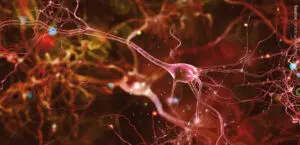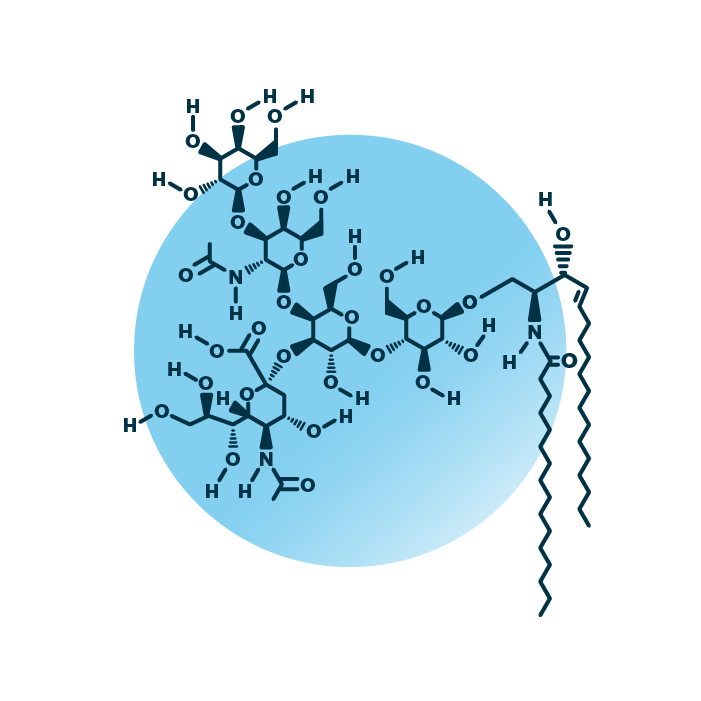About the structure and biological function of GM1
Structure. GM1 ganglioside lipids (monosialotetrahexosylgangliosides) belong to the group of gangliosides within the sphingolipids. Their structure consists of a ceramide backbone linked to an oligosaccharide unit made of five sugar molecules. One of them is a sialic acid. The ceramide backbone contains two hydrocarbon chains: a long-chain base which is linked to a fatty acid via an amide bond. The fatty acid and the long-chain base can be of variable length, hydroxylated, and contain double bonds.
Function. GM1 gangliosides promote differentiation of various neuronal cells. They have protective effects on the neural system by supporting neural stem cell survival and proliferation, regeneration of axons, and inhibiting neurodegeneration through autophagy, cellular “self-eating”. In lipid rafts, GM1 lipids serve a key role in several signaling systems. However, GM1 lipids also act as specific receptors for the cholera toxin. GM1 accumulation leads to GM1 gangliosidosis, a lysosomal storage disease causing generalized symptoms including mental retardation.


